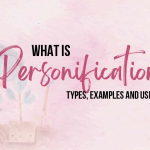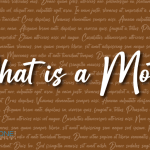Whether you’re a writer or a reader, you must have at least once wondered, “What is imagery?” and why is this word so prevalent in the literary dictionary. And an outline must have familiarised you with how a proper use of this literary device can enhance your writing and transport one into the scenario with your favourite characters.
Read: Here’s a list of Top 10 Popular Drama Fiction Books of all Time.
Authors that accomplish this can make it appear smooth, but it doesn’t typically happen that way; to really catch readers and make them feel like they’re a part of the story, you’ll need to be exact with your word choice and learn to master imagery. Great imagery provides readers with a sensory experience they will not soon forget.
What is Imagery?
Imagery is a literary device that uses figurative language to evoke a sensory experience or to paint a picture for the reader with words. Writers appeal to a reader’s senses of sight, taste, smell, touch, and sound, as well as internal emotion and feelings, by using good descriptive language and figures of speech.
As a result, imaging encompasses not just visual representations or mental thoughts, but also physical experiences and emotional emotions.
“Lovers and madmen have such seething brains,
Such shaping fantasies, that apprehend
More than cool reason ever comprehends.”
“A Midsummer Night’s Dream by Williams Shakespeare“
In the lines above, Shakespeare uses imagery to describe the passionate and imaginative nature of lovers and madmen.
He suggests that their “seething brains” and “shaping fantasies” allow them to perceive and understand more than what can be grasped by “cool reason.”
The phrase “apprehend more than cool reason ever comprehends” suggests that the imaginative and passionate states of mind allow one to grasp a deeper understanding or appreciation of something that cannot be understood through rational thought alone.
You may also like: What is Cozy Mystery? A Beginner’s Complete Guide
There are several types of imagery: including visual imagery, auditory imagery, olfactory imagery, gustatory imagery, and tactile imagery.
- Visual Imagery
- Auditory Imagery
- Olfactory Imagery
- Gustatory Imagery
- Tactile Imagery
- Visual Imagery:
Visual imagery is the language that uses visual cues to assist the reader to build mental images of what is being communicated. It can entail using descriptive language to represent people, locations, objects, and events in such a way that the reader can picture them in their mind’s eye.
Visual imagery can be utilised to inspire emotions and convey the mood of a piece of writing, as well as to create a strong feeling of atmosphere and setting.
For Example, a small excerpt From “The Great Gatsby” by F. Scott Fitzgerald:
“The city seen from the Queensboro Bridge is always the city seen for the first time, in its first wild promise of all the mystery and the beauty in the world.”
This passage uses visual imagery to describe the city as seen from the Queensboro Bridge, with language that evokes a sense of wonder and mystery. - Auditory Imagery:
Auditory imagery refers to language that appeals to the sense of hearing and helps the reader imagine sounds. It can involve the use of descriptive language to depict sounds and noises, as well as the tone and pitch of voices. Auditory imagery can be used to create a sense of atmosphere and to convey the mood of a scene.
For Example, in “One Hundred Years of Solitude” by Gabriel García Márquez, Melquíades says,
“There is no greater solitude than the samurai’s, unless perhaps it is that of the tiger in the jungle.” The phrase “the jungle” is spoken with a low growl, evoking the sound of a predatory animal in the reader’s mind. - Olfactory Imagery:
Olfactory imagery is the use of language to evoke the sensation of smell in the reader’s mind. It is a type of sensory imagery that aims to create a more immersive reading experience by helping the reader to literally “smell” the words on the page.
Olfactory imagery can be used to describe a wide range of smells, from pleasant fragrances like flowers and perfume, to more unpleasant odors like smoke and decay. It can also be used to create atmosphere or convey emotion, such as the smell of fear or anxiety, or the smell of hope and renewal.
For Example, in “Moby-Dick” by Herman Melville, Ishmael says,
“The aroma of those sea-steams! I remember them as the most delicious and bewitching combinations of all conceivable perfumes.”The phrase “most delicious and bewitching combinations of all conceivable perfumes” evokes the sense of a pleasant and alluring smell. - Gustatory Imagery:
Gustatory imagery is the mental representation of the sense of taste. It is the ability to imagine the taste of a certain food or drink in your mind without actually consuming it. Gustatory imagery can be a powerful tool for stimulating the desire to eat or drink and can also be used in creative writing to describe the taste of a particular food or drink in a way that evokes a vivid sensory experience for the reader.
For Example, in “The Catcher in the Rye” by J.D. Salinger, Holden Caulfield says,
“I went to this restaurant where I ordered a Swiss cheese sandwich and a malted milk. They were terrific.” The phrase “Swiss cheese sandwich” and “malted milk” evoke the sense of specific tastes in the reader’s mind. - Tactile Imagery:
Tactile imagery is the mental representation of the sense of touch. It is the ability to imagine the sensation of touching something in your mind without actually touching it. Tactile imagery can be a powerful tool for evoking sensory experiences in the reader’s mind and can be used in creative writing to describe the texture, shape, and feel of an object or surface.
It can also be used to imagine the sensation of touch in a virtual or abstract context, such as imagining the sensation of running your hand over a smooth surface or feeling the warmth of the sun on your skin.
For Example, “The stone wall was rough and cold against her fingertips as she traced the ancient symbols etched into its surface.” from “The Alchemist” by Paulo Coelho – The phrase “rough and cold against her fingertips” helps the reader imagine the texture and temperature of the wall, while the phrase “traced the ancient symbols etched into its surface” helps the reader imagine the sensation of running their fingers over the surface of the wall and feeling the grooves of the symbols.
You may also like: Unlocking success: How to sell books online effectively
How to use Imagery?
There are several ways to use imagery effectively in writing:
- Use descriptive language: Use specific and detailed language to create vivid images in the reader’s mind. Use adjectives, adverbs, and sensory verbs to describe the appearance, movement, sounds, smells, and textures of the objects, people, and places in the story.
- Show, don’t tell: Instead of simply telling the reader what is happening, use imagery to show the scene or action through descriptive language. This will help the reader experience the story more vividly and emotionally.
- Use figurative language: Use metaphors, similes, and other types of figurative language to create comparisons between unlike things and help the reader experience the story more vividly.
- Vary the types of imagery: Use imagery to evoke all of the senses, not just sight. This will help create a more immersive and multidimensional experience for the reader.
- Use imagery to create mood: Use imagery to set the tone and mood of the story. Use dark, gloomy language to create a sense of despair, or use bright, colorful language to create a sense of joy and excitement.
In conclusion, imagery is an important literary device that helps writers create vivid and descriptive images in the reader’s mind. By using descriptive language, figurative language, and evoking the senses, writers can help their readers experience the story more vividly and emotionally.
Whether used to set the mood or simply to bring the story to life, imagery is a powerful tool for engaging the reader’s senses and imagination. Whether in fiction or nonfiction, well-crafted imagery can bring a text to life and make it more enjoyable and memorable for the reader.
















